A Lockdown Brightened By A Library Of Vintage Usborne Books
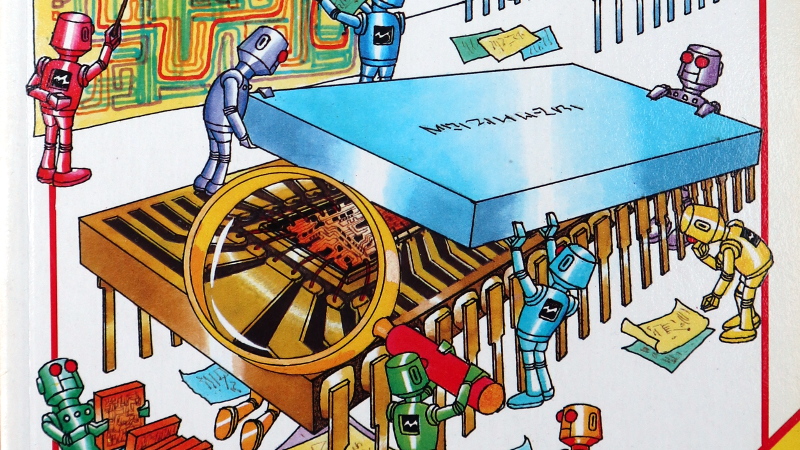
Lockdown is boring. No, let’s emphasize that, lockdown is really boring. Walking for exercise is much less fun than it was last year because it’s a wet and muddy February, and with nowhere open, a rare trip out to a McDonalds drive-through becomes a major outing. Stuck inside for the duration we turn our eyes to some of the older ways to wile away the time. Books. Remember them? In doing that I found that the friend whose house I’m living in has the whole library of Usborne children’s computer and technology books from the 1980s. Suddenly a rainy day doesn’t matter, because we’re in a cheerful world of cartoon robots and computer parts!
When Kids Learned Machine Code
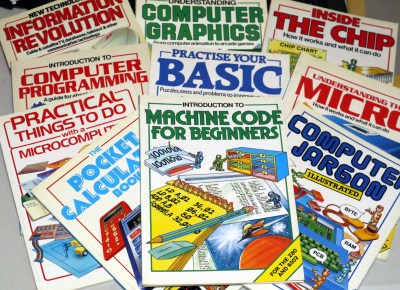
If this leaves you none the wiser, it’s worth explaining that during the 1980s home computer boom there was no Internet handily placed for finding out how your new toy worked. Instead you had to read books and hoard the scraps of information they contained. Publishers responded to this new world of technology with enthusiasm, and the British children’s publisher Usborne did so in their characteristic entertaining and informative style. For probably the only time in history, children were presented with mainstream books telling them how to write machine code and interface directly to microprocessors, and those among them who probably now read Hackaday took to them with glee. They remain something of a cult object among retrocomputing enthusiasts, and fortunately a selection of them are available for download. Usborne are still very much in business producing up-to-date books educating today’s children, and to promote some of their more recent titles for the Raspberry Pi they’ve released them in electronic form.
The books I had in front of me were a varied range covering software (Machine Code for Beginners, Practise your BASIC, Introduction to Computer Programming), general technology and computer instruction (Information Revolution, Inside the Chip, Understanding Your Micro, Computer Jargon, and The Pocket Calculator Book), and hardware (Practical Things To Do with a Microcomputer). There’s so much that it’s difficult to share everything in a Hackaday piece, but I’ll try to pick out the more choice pages.
Let The Robots Show You Around
Of them all my favourite is probably Machine Code for Beginners, a book that introduces kids to machine code through the medium of cartoons and diagrams. It seems incredible, but from another perspective why shouldn’t kids be able to master it? The processors in question are the Z80 and the 6502, and with the help of a cast of cartoon robots it handles explaining some very in-depth aspects of the computer’s operation. Registers and flags are not the normal fare for kids even today.
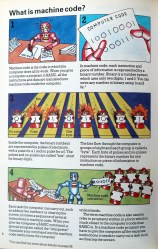
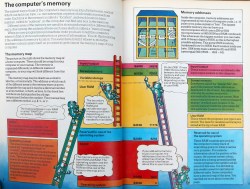

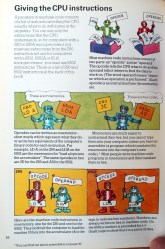

A particularly period touch comes in the buyers guide that’s part of Understanding Your Micro, in which the various models of the day, circa 1982, are presented. It’s interesting that some slightly more unusual machines for the British market are mentioned, such as the handheld Sharp PC1500, or the Commodore Pet.
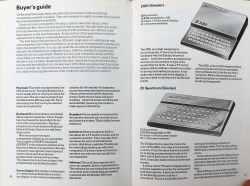
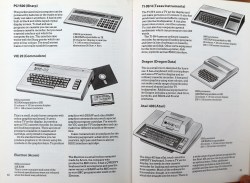
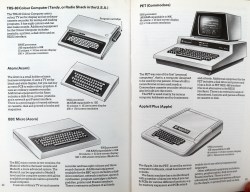
College-Level Stuff, Presented For Children
Inside The Chip really lives up to its name, it concentrates on microprocessors and takes the kid through every part of a typical late-70s chip. Kids get to understand the clock and control circuits, and the ALU. This is normally stuff that’s taught to first-year university students, yet here it is in a kids book!

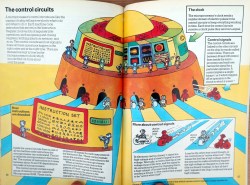
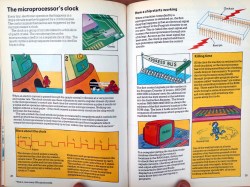
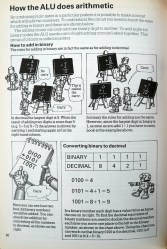
8-bit microcomputers seem quaint in 2021, but at the time there was a real sense of being on the threshold of a technological revolution. This was a time in which almost everything in a domestic setting was still all-analogue, and even something with a seven-segment display was still seen as impossibly cool. So the vision of the future seems coloured by this, and it’s interesting to see where they hit the mark. Cassette recorders and acoustic couplers, maybe not, but networked computers and downloading “telesoftware” are right on the button.


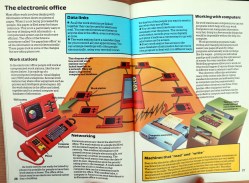
With so many pages to choose from, it’s been really difficult to distill a selection to show you. I wonder whether every generations grows up and imagines that theirs was the last one to have a particular freedom, but it does sometimes seem as though my generation had a privileged position of being the first to have computers of their own, and almost the only one to have computers that were designed to be programmed rather than merely used. Those that immediately followed us had that promise taken away from them and replaced by schooling in word processors and spreadsheets, so it’s left to the Raspberry Pi cohort to pick up the baton we dropped back in the 1980s.
The Usborne books present a great chance for a quick wallow in nostalgia, as well as an interesting explanation even today of how some of the tech they are explaining works. I’m grateful to my friend for letting me borrow them to make this piece, and I hope you find them as interesting as I did.
Post a Comment